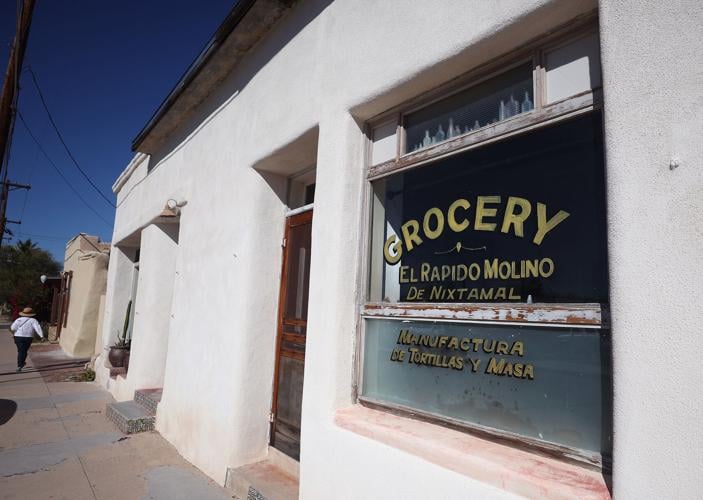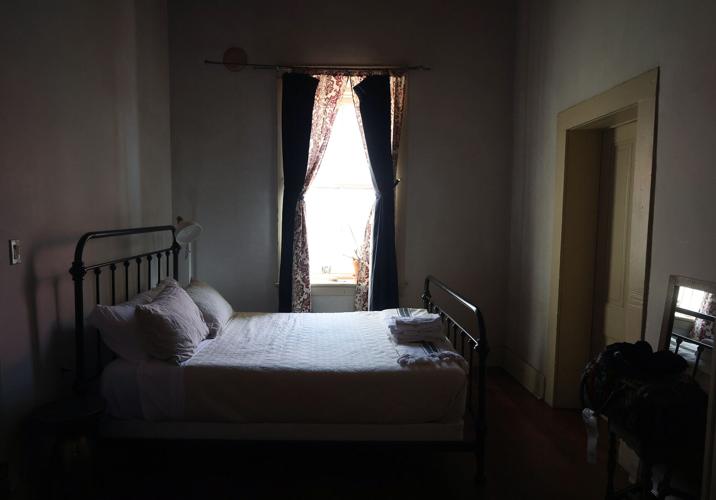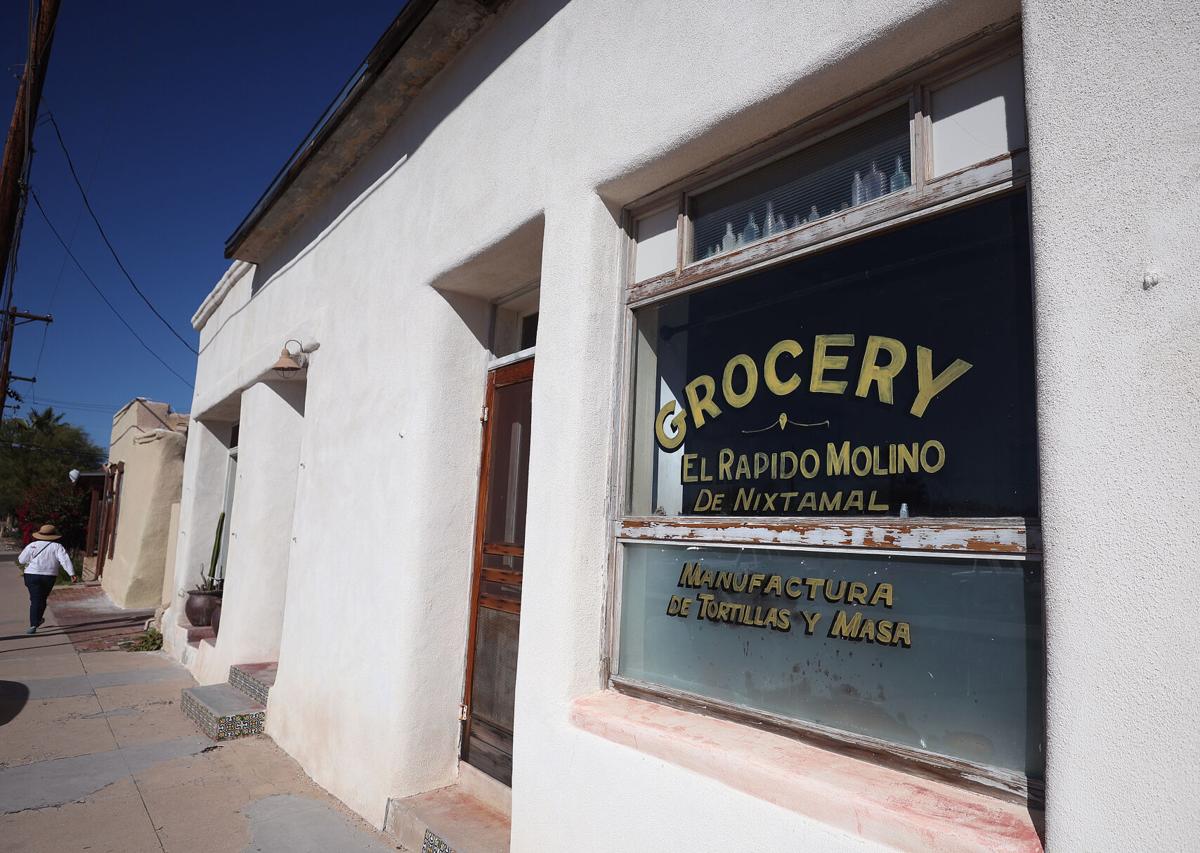To say that Tucson is filled with hidden gems is an understatement.
Nearly every corner of this historic city is home to a hidden gem, including in El Presidio Historic District just northwest of downtown Tucson. Tucked into the neighborhood is a space that was once home to a market, beauty salon and now, a small hotel and art gallery.
The spot located at 220 N. Meyer Ave. is the current home of Object Hotel — a modest-sized inn and art gallery.
“I really aspire for it to be a place where you can rest and call your energy back,” says Object Hotel manager Rachel Brand. “That's what the experience was for me when I got to the hotel. I remember (having) that creative spark in the work I was doing as a shoe designer. It was like coming back to my fantasy of being 23 running a business in a small town on the border of Mexico and being able to project into a building and reimagine what you can do with your life and your time.
“I really want the hotel to be a place where people come back to themselves.”

Paintings by Jeff Bohm hang in the Grocery Gallery.
Object Hotel was founded by Brand’s former boyfriend several years ago at the former Woolworth’s department store in downtown Bisbee, which also operated as Object Limited — a space dedicated to vintage shopping.
Following the split, Brand purchased the business and began following her creative passion by transforming it into an “art experience,” she says.
Brand worked as a shoe designer in New York City before she moved to the Southwest in early 2020.
“I was on a road trip and just kind of fell in love and felt like I wanted to stay instead of going back to my apartment in Brooklyn and then the pandemic happened so it made everything so simple,” she says. “I never even went back to pack my stuff and I lived in New York for like 10 years.”
Object Hotel in Tucson features three bedrooms and one shared bathroom and kitchen. Visitors can rent out the entire home starting at $280 per night or an individual room including the “Writer’s Room” and “Waiter’s Room” starting at $108 per night.
One of the first people to stay at the Tucson location was a screenwriter from Los Angeles who used the space as a writer’s cove while working on a script, hence the “Writer’s Room” name.

“The Writer’s Room,” is one of three rooms for rent at the Object Hotel and Grocery Gallery.
The overall mission of the space is to help people get their creative juices flowing, whether they’re writers or artists. Object Hotel in Bisbee even offers an Artist Residency program where creatives receive a 20% discount on extended stays at the hotel.
In Tucson, Object Hotel is also home to a small art gallery with rotating exhibitions. Brand says they open the gallery space fulltime around once a year for a month and a half. Additionally, the gallery space is open with new art during Downtown Tucson's 1st Saturday Art Walk, which is the first weekend every month.
The current featured artist is Jeff Bohm, but you can find art from building owner Alex Kouvel around the building, too.
After Brand connected with Kouvel, who has owned the building for around 10 years, the two shared a similar vision for what the space could be.
“We really did have a shared vision and she loved this place. And that's one way to think of it, as our shared child,” Kouvel says.
When Kouvel bought the building a decade ago, he spent nearly two years renovating so it could once again be safe to occupy. He says it’s a privilege to take care of and help preserve the building.
“It is a historic home building in the Presidio neighborhood,” he says. “This historic neighborhood is right in the center of the arts district and very close walking distance to anything downtown. It's an 1885 building, so it's as if one walks into a different time.”

The hallway entry is lined with artwork at the Object Hotel and Grocery Gallery, 220 N. Meyer Ave. This is the second location of the hotel, the first is in Bisbee.
Since starting the gallery, dubbed the Grocery Gallery as a nod to the building’s heyday as a tortilleria and market, Brand hopes to host more community events around the space such as art shows and even ballet classes. Object Hotel will also be part of an upcoming Presidio walking tour.
“I want everyone to feel like they're in a place where art matters and where it's elevated,” Brand said. “I think what's been powerful with everyone I've worked with and a lot of people I’ve noticed is that when we come together as a community and just recognize that so many of us spend time making art or doing something creative or experimenting with cuisine or whatever — that's a really important part of the community and the fabric of the city or town. And just to feel personally celebrated or just to see that that's something that’s celebrated and it's also reflected in the hotel.”
'It was a home for a family, a big family that loved each other.'
Despite its pale off-white adobe exterior, the building at 220 N. Meyer Ave. has anything but a muted story.
Its history is overflowing with color. Before it was a hotel or an event space, it was a home — filled with family, good food and a lifetime of memories.
The main building is believed to have been built around 1885, according to records obtained by Kouvel, which included a small space behind the house on Washington Street that could have been a garage or corral.
You may recognize that small space as pasta restaurant Ceres today, but long before then, it was home to El Rapido — a Mexican eatery that served fresh tortillas and tamales, founded by local writer Melani Martinez’s great-grandfather Aurelio Perez in 1933.

A snapshot of El Rapido, a tortilleria and eatery, in the 1970s. The spot was founded by local writer Melani Martinez’s great-grandfather, Aurelio Perez, in 1933.
“The house next to it belonged to my great-grandfather. He got it in the early 1930s,” Martinez says. “And he turned it into a market. I think it was more of just a molino (mill) market back then. So, you could go and get your corn ground there. And he sold a bunch of things at the market and they eventually moved it (over) to where my dad had it. So, it went through three generations.”
Visitors can still spot the now-restored “grocery” sign on the Meyer Avenue building’s front window.
Aside from the molino market, the Meyer Avenue home also housed a beauty salon operated by Martinez’s grandmother from the late 1930s to the early 1940s.
Eventually, Martinez’s father, Tony Peyron, took over the family business and ran the operation until closing on Christmas Eve in 2000.

Art by building owner Alex Kouvel hangs in one of the rooms at Object Hotel. This room was once home to a beauty salon from the late 1930s to the early 1940s.
“Essentially by the time I was there, the house was vacant of people but not vacant of things,” Martinez says. “So it was almost like walking through a museum. For a little kid, a museum that nobody was keeping. … There were lots of boxes and furniture and there was clothing hanging in the armoire. There was actually still some food supplies in the kitchen. It wasn't completely abandoned, but no one lived there when I was walking through those spaces, so that would have been in the '80s.”
Growing up, Martinez heard stories about her family and their lives inside the Meyer Avenue home. She discusses some of these stories and more behind-the-scenes tidbits in her new book “The Molino,” which will be released later this year.
Throughout their nearly 70-year tenure at the Meyer Avenue home, Martinez’s family saw many changes to areas surrounding their home including in the 1960s when the urban renewal project began in downtown Tucson, ultimately destroying local barrios and communities.
Back then, adobe houses and the people in them weren’t seen as valuable, Martinez says.

Melani “Mele” Martinez
But those houses, the people and their stories are just as important as the places that have since replaced them — something that she hopes to carry forward as she works toward preserving her family’s and the Meyer home’s legacy.
“I think it's important for us, personally, because it's very difficult to detangle our love for people from the place that we were in, right? And so that place, that corner represents a lot of things,” Martinez says. “At the end of the day, that adobe brick is going to crumble down. I mean, I was writing about how it was crumbling when I was a child. And I know someday it's gonna be dust, it's gonna be nothing. But there's something represented in the space … that has to do with the value of the people in my family. And the value of people in the families of lots of Mexican-Americans.”
While no one can be quite sure what the future holds for this old adobe building on Meyer Avenue, Martinez hopes it will be remembered for one thing: being a family home.
“It was a home for a family, a big family that loved each other,” she says. “It's not just a building, it was a home. And it's not a home anymore. And I don't know if it'll be a home ever again. But at one time, those four little rooms held a bunch of people, 11 people, more than 11 people sleeping there sometimes at once. So, if there's anything that I would hope would be remembered is that this was something where someone dwelled.
“These 11 souls or more were dwelling in this space and having Christmases and having Easters, birthdays, weddings, funerals, all of those things happened in this place,” she says. “It's not just a brick-and-mortar.”
Get your morning recap of today's local news and read the full stories here: tucne.ws/morning











